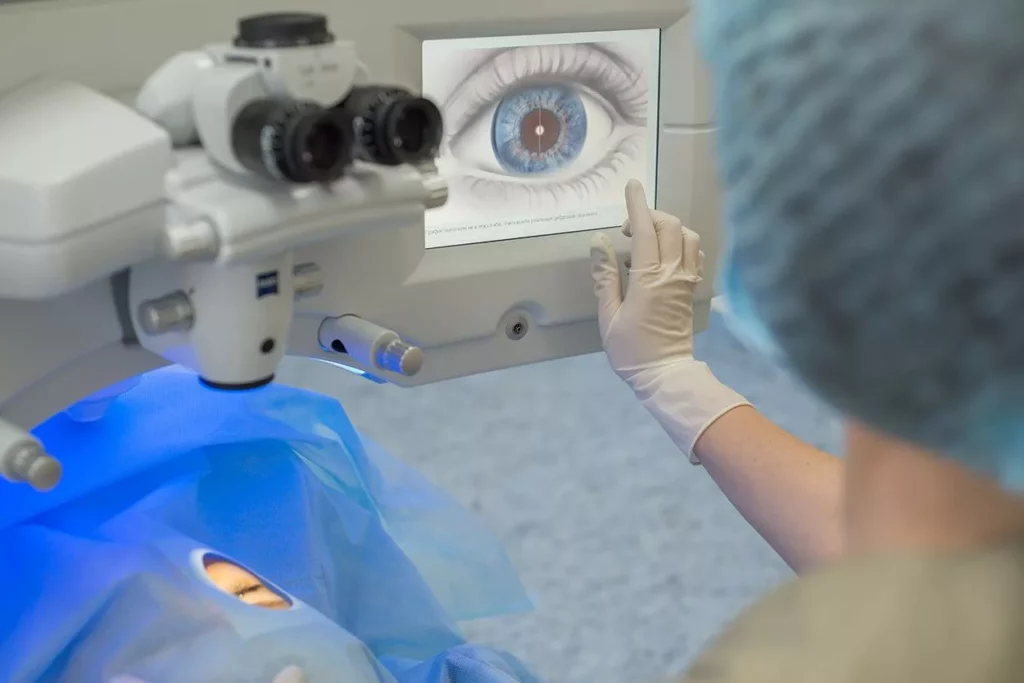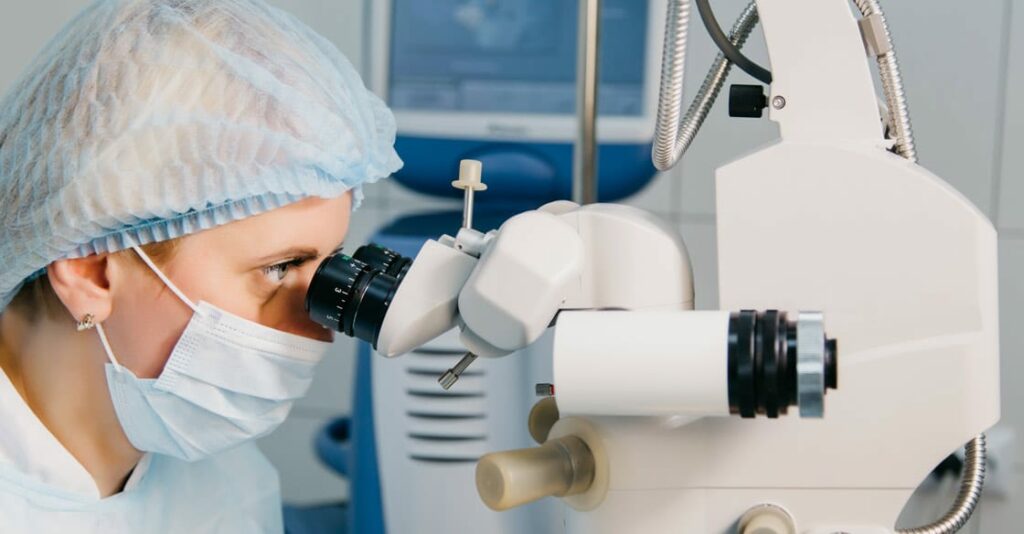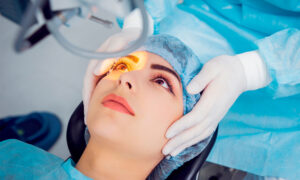Refractive errors are common vision problems that can affect people of all ages. Fortunately, with recent advancements in technology, laser eye surgery has emerged as an effective solution for correcting these errors. If you’re considering laser eye surgery as a way to improve your vision, it’s important to understand the basics of refractive errors and the different types of laser eye surgery available.
Understanding Refractive Errors
Refractive errors occur when the shape of your eye prevents light from focusing directly on the retina. This can result in blurred vision, and it often requires the use of corrective lenses or glasses. The three most common types of refractive errors are:
For individuals considering laser eye surgery, it’s essential to understand the various options available. From LASIK (Laser-Assisted In Situ Keratomileusis) to PRK (Photorefractive Keratectomy) and SMILE (Small Incision Lenticule Extraction), each procedure has its own set of advantages and considerations. Consulting with an experienced ophthalmologist can help determine the most suitable option based on individual eye health and lifestyle needs.
Types of Refractive Errors
– Myopia, or nearsightedness, which makes distant objects appear blurry.
– Hyperopia, or farsightedness, which makes close objects appear blurry.
– Astigmatism, which causes overall blurry vision due to an asymmetrical cornea.
Myopia, also known as nearsightedness, is a common refractive error that affects a significant portion of the population. People with myopia have difficulty seeing objects at a distance clearly, which can make activities like driving or watching a movie challenging. This condition occurs when the eyeball is too long or the cornea is too curved, causing light rays to focus in front of the retina instead of directly on it.
Hyperopia, or farsightedness, is another prevalent refractive error that impacts individuals of all ages. Those with hyperopia struggle to see objects up close, such as when reading a book or using a computer. This condition occurs when the eyeball is too short or the cornea is too flat, causing light to focus behind the retina rather than on it. Hyperopia can lead to eye strain and fatigue, particularly during activities that require close visual attention for extended periods.

Causes and Symptoms of Refractive Errors
Refractive errors can be caused by a variety of factors, including genetics and the shape of the eye. Common symptoms include difficulty seeing objects that are far away or up close, squinting, eye strain, and headaches. If you’re experiencing any of these symptoms, it’s important to schedule an eye examination to determine the best course of action for correcting your vision.
It’s essential to address refractive errors promptly to prevent further eye strain and discomfort. By understanding the causes and symptoms of these common vision issues, individuals can take proactive steps to maintain healthy eyesight and improve their quality of life. Regular eye exams and consultations with an optometrist or ophthalmologist are crucial in diagnosing and managing refractive errors effectively. Remember, clear vision is key to experiencing the world around you to the fullest! Find more about refractive errors on https://www.nei.nih.gov/learn-about-eye-health/eye-conditions-and-diseases/refractive-errors
An Overview of Laser Eye Surgery
Laser eye surgery is a popular and effective method for correcting refractive errors. It works by using a laser to reshape the cornea, allowing light to properly focus on the retina. There are different types of laser eye surgery procedures available, each with its own unique benefits and considerations.
How Laser Eye Surgery Works
During laser eye surgery, an ophthalmologist uses a specialized laser to remove a small portion of the cornea. This reshaping process corrects the refractive error and allows light to enter the eye properly. The surgery typically takes less than 30 minutes and is performed on an outpatient basis.
Moreover, advancements in laser technology have significantly improved the precision and safety of these procedures. Customized wavefront-guided lasers can now map the unique characteristics of each individual’s eye, allowing for personalized treatment that enhances visual outcomes and reduces the risk of side effects. Learn more about Preparing for laser eye surgery steps to take before the procedure on https://creepygingerkid.com/preparing-for-laser-eye-surgery-steps-to-take-before-the-procedure/
Benefits and Risks of Laser Eye Surgery
Laser eye surgery offers several benefits, including improved vision without the need for glasses or contact lenses. It can also enhance your quality of life, allowing you to participate in activities such as sports or swimming without worrying about glasses or lenses. However, like any surgical procedure, there are risks involved. These can include dry eyes, sensitivity to light, and a small chance of infection or vision changes.
Understanding both the benefits and potential risks of laser eye surgery is crucial for making an informed decision. By weighing the advantages of reduced dependence on visual aids against the risks of complications, individuals can determine if laser eye surgery is the right choice for their vision correction needs.
Evaluating Your Suitability for Laser Eye Surgery
Before undergoing laser eye surgery, it’s essential to undergo a pre-surgery examination to determine your suitability for the procedure. This examination will include a thorough assessment of your eye health, as well as an evaluation of factors that may influence your eligibility for the surgery.
Ensuring that you are a suitable candidate for laser eye surgery is crucial for achieving the best possible outcomes. The pre-surgery examination is a comprehensive process that aims to assess various aspects of your eye health and overall well-being.
Pre-Surgery Examination
The pre-surgery examination typically involves several tests, including a detailed measurement of your eye’s shape and size. Your ophthalmologist will also assess the thickness of your cornea, as this can impact the type of laser eye surgery procedure that is most suitable for you. Additionally, your eye health and overall medical history will be taken into consideration.
During the examination, your ophthalmologist will also evaluate the presence of any eye conditions, such as dry eyes or glaucoma, that may affect your candidacy for laser eye surgery. These conditions need to be managed appropriately to ensure the success of the procedure and minimize the risk of complications.
Factors Influencing Suitability
Several factors can influence your suitability for laser eye surgery, including the severity of your refractive error, your age, and the stability of your vision. It’s important to have realistic expectations and to discuss your goals and concerns with your ophthalmologist to determine if laser eye surgery is the right choice for you.
Furthermore, your lifestyle and occupation may also play a role in determining your suitability for laser eye surgery. For example, individuals who participate in contact sports or have physically demanding jobs may need to consider the potential impact of these activities on their post-operative recovery and long-term eye health.
Different Types of Laser Eye Surgery
There are several types of laser eye surgery procedures available, each with its own advantages and considerations. The most common ones include:
LASIK: Laser-Assisted In Situ Keratomileusis
LASIK is a popular laser eye surgery procedure that involves creating a thin flap on the cornea to access the underlying tissue. The cornea is then reshaped using a laser, and the flap is repositioned. LASIK offers rapid recovery time and minimal post-operative discomfort. To learn more about post-operative discomfort click here.
One of the key benefits of LASIK is its ability to correct a wide range of refractive errors, including nearsightedness, farsightedness, and astigmatism. This versatility has made LASIK a popular choice for individuals looking to reduce or eliminate their dependence on glasses or contact lenses. Additionally, many patients experience improved vision almost immediately after the procedure, with optimal results becoming apparent within a few days.
PRK: Photorefractive Keratectomy
PRK is another laser eye surgery option that involves removing the outer layer of the cornea to access the underlying tissue. The cornea is then reshaped using a laser. PRK is a suitable choice for individuals with thin corneas or other factors that make LASIK less ideal. The recovery process for PRK may take longer than LASIK, but the results can be equally effective.
One advantage of PRK over LASIK is that it eliminates the risk of complications associated with creating a corneal flap, making it a preferred option for patients with occupations or hobbies that may put them at risk for eye trauma. While the initial recovery period for PRK may be slightly longer and involve more discomfort, many patients ultimately achieve excellent visual outcomes comparable to those of LASIK.
LASEK: Laser Epithelial Keratomileusis
LASEK is a variation of LASIK that involves creating a thinner corneal flap and preserving the corneal integrity. The cornea is reshaped using a laser, and the flap is repositioned. LASEK is a suitable option for individuals with thin corneas who may not qualify for LASIK. The recovery process for LASEK is often similar to PRK.
One of the distinguishing features of LASEK is its ability to maintain the structural integrity of the cornea, making it a preferred choice for individuals with thin or irregular corneas. By preserving more corneal tissue compared to LASIK, LASEK may offer a reduced risk of certain complications, such as dry eye syndrome. While the recovery process for LASEK may involve slightly more discomfort and a longer healing time compared to LASIK, many patients find the results to be well worth the temporary inconvenience.
Post-Surgery Care and Expectations
The days and weeks following laser eye surgery are crucial for ensuring proper healing and achieving optimal results. Understanding the recovery process and knowing what to expect can help you navigate this important phase with confidence.

Recovery Process and Time
The recovery process varies depending on the type of laser eye surgery you undergo. In general, you may experience mild discomfort and a temporary fluctuation in vision. It’s important to follow your ophthalmologist’s post-operative instructions, which may include using prescribed eye drops, avoiding strenuous activities, and attending follow-up appointments. Most individuals are able to resume their normal activities within a few days to a week after surgery.
During the recovery period, your eyes will be more sensitive to light and may feel dry or itchy. This is a normal part of the healing process as your eyes adjust to the changes made during surgery. To alleviate any discomfort, your ophthalmologist may recommend using lubricating eye drops to keep your eyes moist and comfortable. It’s important to avoid rubbing your eyes, as this can interfere with the healing process and increase the risk of infection.
Long-Term Results and Possible Complications
Laser eye surgery can provide excellent long-term results in terms of improved vision and reduced reliance on corrective lenses. However, it’s important to understand that, like any surgical procedure, there are potential risks and complications. These can include dry eyes, glare, halos around lights, and a possibility of needing an enhancement procedure in the future. It’s crucial to have realistic expectations and maintain regular follow-up appointments with your ophthalmologist to monitor your eye health.
While the majority of individuals experience significant improvement in their vision after laser eye surgery, it’s important to note that results can vary. Factors such as the severity of your refractive error and the health of your eyes can impact the outcome of the procedure. Your ophthalmologist will discuss the potential risks and benefits with you during your consultation, ensuring that you have all the information you need to make an informed decision.
In addition to the physical aspect of recovery, it’s also important to consider the emotional and psychological impact of laser eye surgery. Many individuals feel a sense of liberation and increased self-confidence after the procedure, as they are no longer reliant on glasses or contact lenses. However, it’s normal to experience some anxiety or apprehension before and after the surgery. Your ophthalmologist and their team will provide you with the support and reassurance you need throughout the process.
In conclusion, if you’re living with refractive errors, laser eye surgery may be an excellent solution to consider. By understanding the basics of refractive errors and the different types of laser eye surgery available, you can make an informed decision about the best course of action for your vision needs. Remember to consult with a qualified ophthalmologist to discuss your suitability for the procedure and to address any questions or concerns you may have. With the right guidance and care, you can embark on a journey towards clearer and improved vision.




